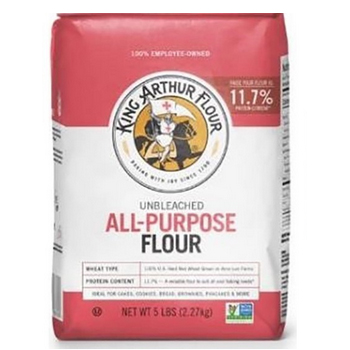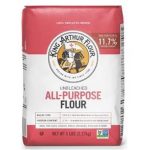Despite manufacturers’ best intentions to provide safe products for consumers, notifications about recalled products appear in news headlines with increasing regularity. The CDC reports that each year, 48 million Americans experience foodborne illnesses, resulting in a reported 128,000 hospitalizations and 3,000 deaths. Behind these statistics are recall trends that can lead to operational and financial instability, and a loss of reputation for companies in the marketplace. Proactive measures and tools adopted by experienced food and beverage manufacturers can help mitigate the potentially harmful effects of these product recalls by establishing preparedness initiatives.
Recall Essential Facts
A recall is defined as a request for the return of a product from the market due to a defect or safety concern resulting from a variety of issues including improper labeling or contamination, which places the manufacturer at risk of legal action. Product recalls can be issued by either the manufacturer or a governmental agency, but it is the sole responsibility of the company to properly recall and notify consumers of unsafe products. Recalls are categorized as either voluntary or mandatory, with the majority falling under the voluntary classification. In the case of a voluntary recall, a manufacturer has greater control over the process with less stringent procedures, review and paperwork. While both have the same potential for negative effects and significant legal costs, a voluntary recall is preferred by manufacturers. Implementing an industry-specific ERP solution with a documented recall preparedness plan and mock recall capabilities provide the necessary tools for either scenario, as recalls are inevitable in today’s manufacturing environment.
Recall Trends
In the USDA- and FDA-regulated markets, comparatively, there have been a slightly higher number of recall incidents in the beginning months of 2019 versus 2018. Mispackaging is identified as one of the primary recall issues, involving packaging a finished good into the wrong container. Another trending recall cause involves not properly identifying an ingredient on the packaging label. Both of these manufacturing errors resulted in the labels not providing an accurate reflection of the product, which could be potentially harmful to consumers if the undeclared ingredient(s) include one of the common allergens. Well-documented and properly executed internal manufacturing processes, in addition to an automated ERP solution, create checks and balances and assist in generating accurate, compliant packaging and nutrition fact panels to meet the requirements of consumers and regulatory bodies.
A third recall trend of 2019 is being driven by consumer complaints in regards to foreign materials such as metal fragments, plastics or rubber pieces in finished goods. This is caused by incomplete testing, lack of or faulty material detection equipment, including metal detectors, x-rays and other devices used during manufacturing. Due to an increasing number of these types of incidents, the USDA has issued a guidance document requiring manufacturers to maintain updated documentation of their internal procedures in their hazard analysis and critical control point (HACCP) plan. This guidance necessitates follow up with federal inspectors regarding any adjustments made to the plan. HACCP information recorded within an ERP solution helps to identify and control potential hazards before food safety is compromised—providing quality, consistent and safe consumables for the public.
Progress towards fewer FDA food and beverage recalls continues due to an increase in FDA inspections as well as manufacturers’ success in proactive measures to stay abreast of FDA requirements. However, bacterial pathogenic concerns including Listeria, Salmonella and E. coli continue to be prevalent recall culprits. This has resulted in the FDA utilizing the Whole Genome Sequencing (WGS) Program in an attempt to protect consumers from foodborne illness. By swabbing manufacturing environments and sending samples to WGS, the DNA strains are documented in a centralized public database—holding manufacturer’s accountable for processing and sanitation control. When an outbreak occurs, the database is able to locate possible matches that help health officials identify the source of contamination, and stop outbreaks more quickly, thereby avoiding additional widespread illnesses. As the database grows in size, so will the speed of investigations to determine the root causes of illnesses. This program has the potential to not only stop outbreaks from spreading but also includes proactive applications for increasing the safety of the food and beverage industry as a whole.
ERP’s Role in Recall Preparedness
An industry-specific ERP’s real-time forward and backward lot traceability, detailed record keeping, allergen/attribute tracking and efficient, documented processes support end-to-end recall management functionality to maintain compliance. With preventative measures such as establishing supplier relationships, conducting quality control testing and documenting quarantine procedures, an ERP solution works to identify gaps and prevent future recalls. Accurate product labeling is one of the key factors of recall prevention and food and beverage ERP software handles the intricacies of packaging and label creation, such as ingredient and allergen statements, nutrient analysis, expiration dates and lot and batch numbers—creating an audit trail that allows items to be located promptly in the event of a recall. As part of a sound food safety plan, mock recalls conducted regularly encourages familiarity with internal recall processes, as well as allows for adjustments to be made as needed. With a comprehensive ERP to generate lot tracking reports, manufacturers are able to identify and locate contaminated products in order to notify clients, vendors, consumers and government agencies quickly in the event of a recall—helping to minimize harmful effects in the marketplace as well as legal action.
The trends identified in recent recalls issued by the FDA and the USDA, thus far in 2019, demonstrate that manufacturers need to be proactive in how they respond in order to mitigate the detrimental effects that recalls can have on companies and to public health. With the increasing scrutiny from the FDA and USDA, along with an aware consumer base, it’s important for forward-thinking businesses to address the eventuality of a product recall with sound food safety and HACCP plans and an industry-focused ERP software solution that promotes, supports and helps manage preparedness and responsive action, if needed.




















